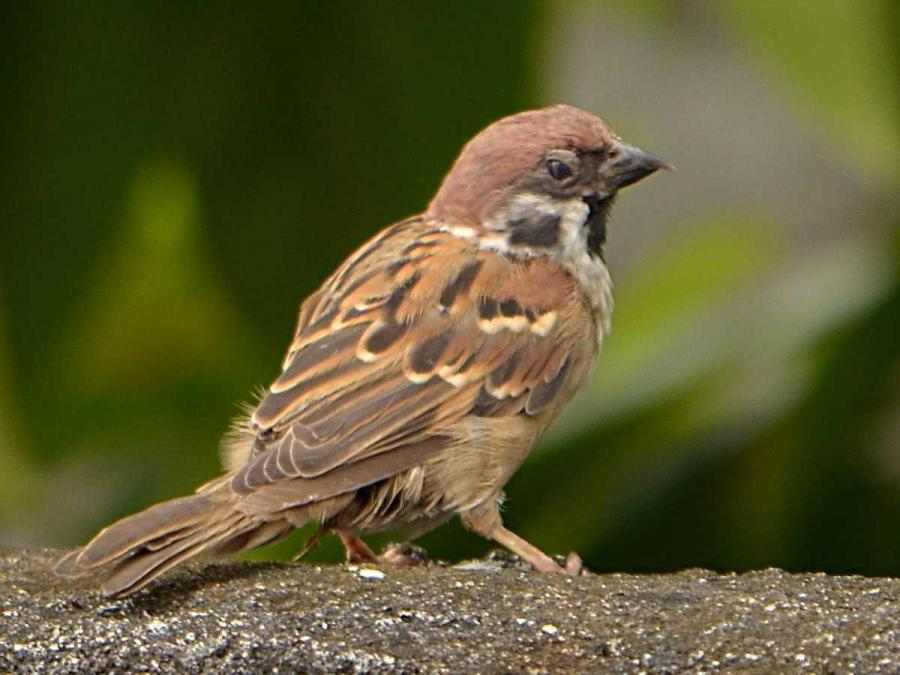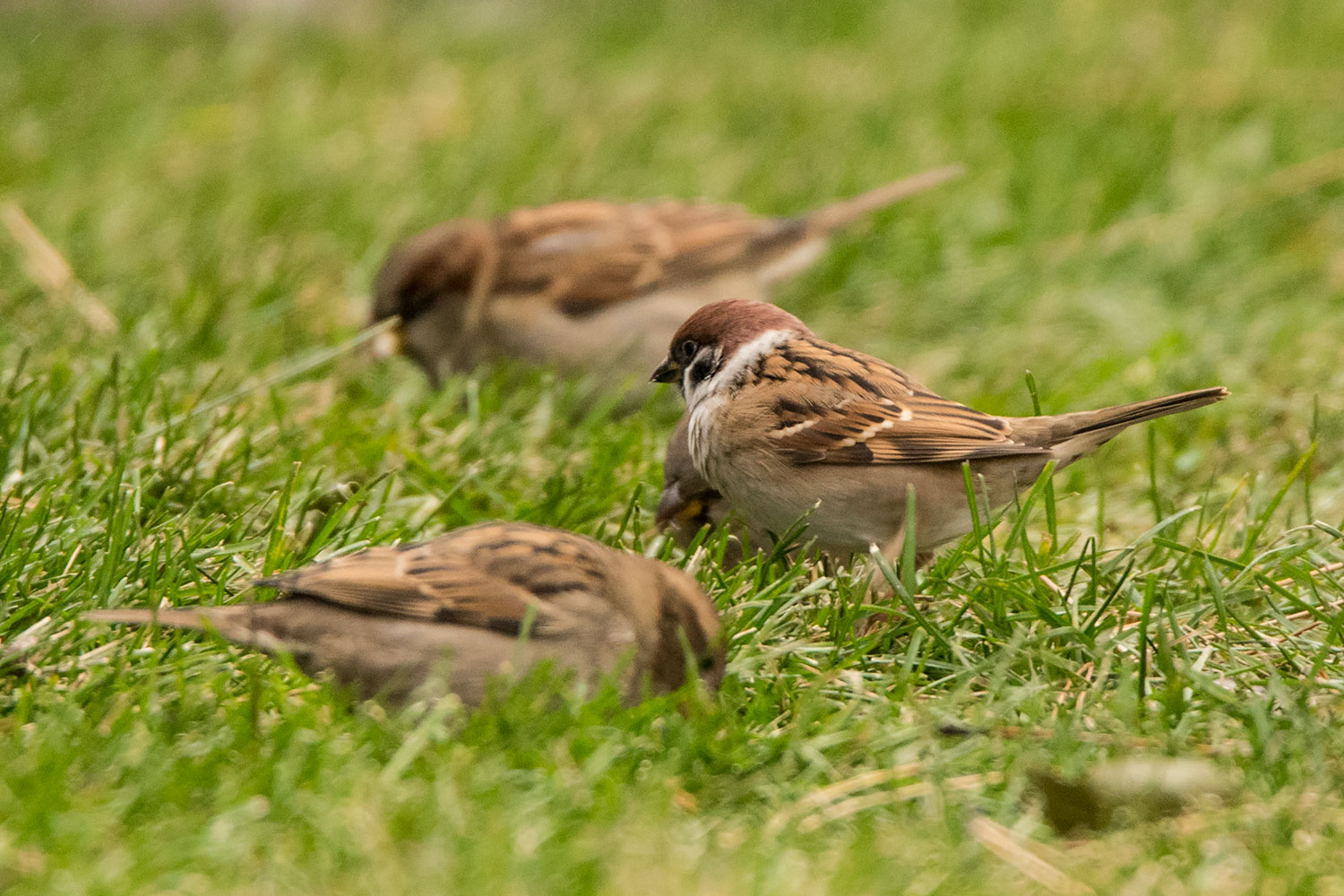
A domed nest, like that of the House Sparrow, is sometimes built in the old nest of a Magpie or other bird. The haunts of man are not always shunned, for old thatch in a barn or cottage will shelter a colony. Some of the nests are not actually in holes in rock, but are built among roots of overhanging furze or other bushes. Though occasionally nesting in isolated trees, it is a gregarious bird at all seasons, and a grove of old trees with a plentiful supply of hollows, or a disused quarry, are favourite sites for the colony what it likes is a hole in which to put its untidy nest, composed of hay, grass, wool or other material and lined with feathers. Its voice is more shrill the call is a shorter chip, than the House Sparrow’s and the song, consisting of modulated chirps, is musical. They are said to be duller, and in the depicted young bird the face pattern is blurred. Young, even in the nest, closely resemble their parents. The legs are pale brown and the irises are hazel. In summer the bill is lead-blue, in winter almost black. Two distinct though narrow white bars cross the brown wings.
Eurasian tree sparrow Patch#
The crown and nape are rich chestnut, and on the white cheeks and ear-coverts there is a triangular black patch the chin and throat are black. The sexes are practically alike, an important specific character. This 12.5–14 cm long bird is often confused with the larger House Sparrow, but its rich brown, almost coppery head, a black patch on its white cheeks, and a double white wing bar, together its slighter and more graceful build, are distinctive. The small American Passerculus sandwichensis,population is sometimes referred to as “German Sparrows”, to distinguish it from the native species as well as the vast numbers of “English” House Sparrows. In Australia, it is found in some rural and semi-rural districts, but not cities. It used to be considered as the national bird of the Philippines, and locally called maya. The Tree Sparrow is rural in Europe, but replaces its relative as a town bird in parts of Asia. Changes in farming methods have meant that species is declining in some parts of western Europe. From there, it has slowly expanded its range into Illinois and Missouri. In the United States (where it is known as the Eurasian Tree Sparrow to differentiate it from the native, unrelated American Tree Sparrow), German immigrants introduced it to the area around St. Washington, D.C: National Geographic.The Tree Sparrow, Passer montanus, is spread over most of Europe and Siberia, and allied forms occur in other parts of Asia. National Geographic complete birds of North America. A number of reports on the west coast are considered to be escapees (Alderfer 2006), and it may be impossible to determine escaped birds from legitimate vagrants.Īlderfer, J. K., & National Geographic Society (U.S.) (2006). Presumed vagrants have been recorded in Minnesota, Wisconsin, Ontario, Michigan, and Manitoba. The presumption has always been that competition with House Sparrow have prevented the species from expanding more widely though there is no evidence to suggest that is the case. Louis, Missouri in 1870 and the species has not expanded greatly beyond the release site in more than 100 years, though they can be found along the Mississippi River corridor into southeastern Iowa and western Illinois.

12 birds from Germany were released in St.


Like its well-known and widespread co-gener House Sparrow, Eurasian Tree Sparrow was deliberately introduced to North America. It has been seen along both Harvard and Lincoln Avenues by a number of local birders today (3/23). The address is on the corner of Harvard and Lehigh Avenues, not more than three blocks from the Cape May State Park bird observation deck.

The bird was reported on the listserv to be visiting a feeder at 113 Harvard Avenue in Cape May. Photo by Sam Galick, used with permission If accepted, this is the first state record for New Jersey and the first record for the east coast. The bird was discovered by Rob and Lisa Ann Fanning. Which brings me to the report of a Eurasian Tree Sparrow in Cape May, New Jersey, today. In any case it’s an opportunity to add to a region’s list, which is still notable regardless of the species. No doubt there are some birders who feel that way about the ever-expanding Eurasian Collared-Dove or the mostly expanded European Starling. Maybe it’s because non-native firsts are accompanied with a sort of trepidation among birders, as if we worry that in the not-too-distant future we’ll look back on that first state record as a ominous sign of things to come. Others, particularly those representing introduced species, seem to lack the same buzz as those from those birds from other continents, or even those the opposite side of this continent. Some are truly unexpected while others represent long-awaited additions to a region’s list.


 0 kommentar(er)
0 kommentar(er)
